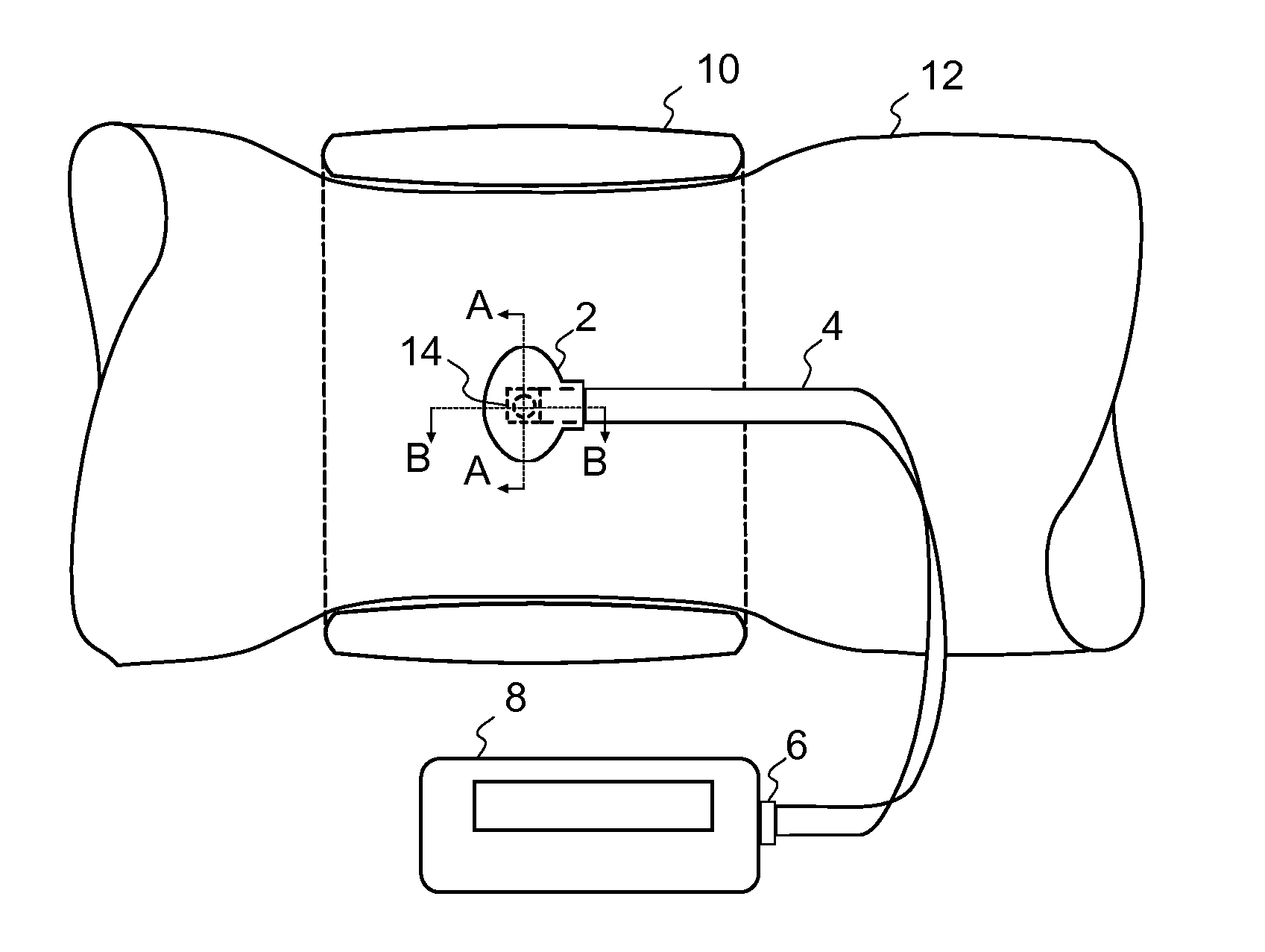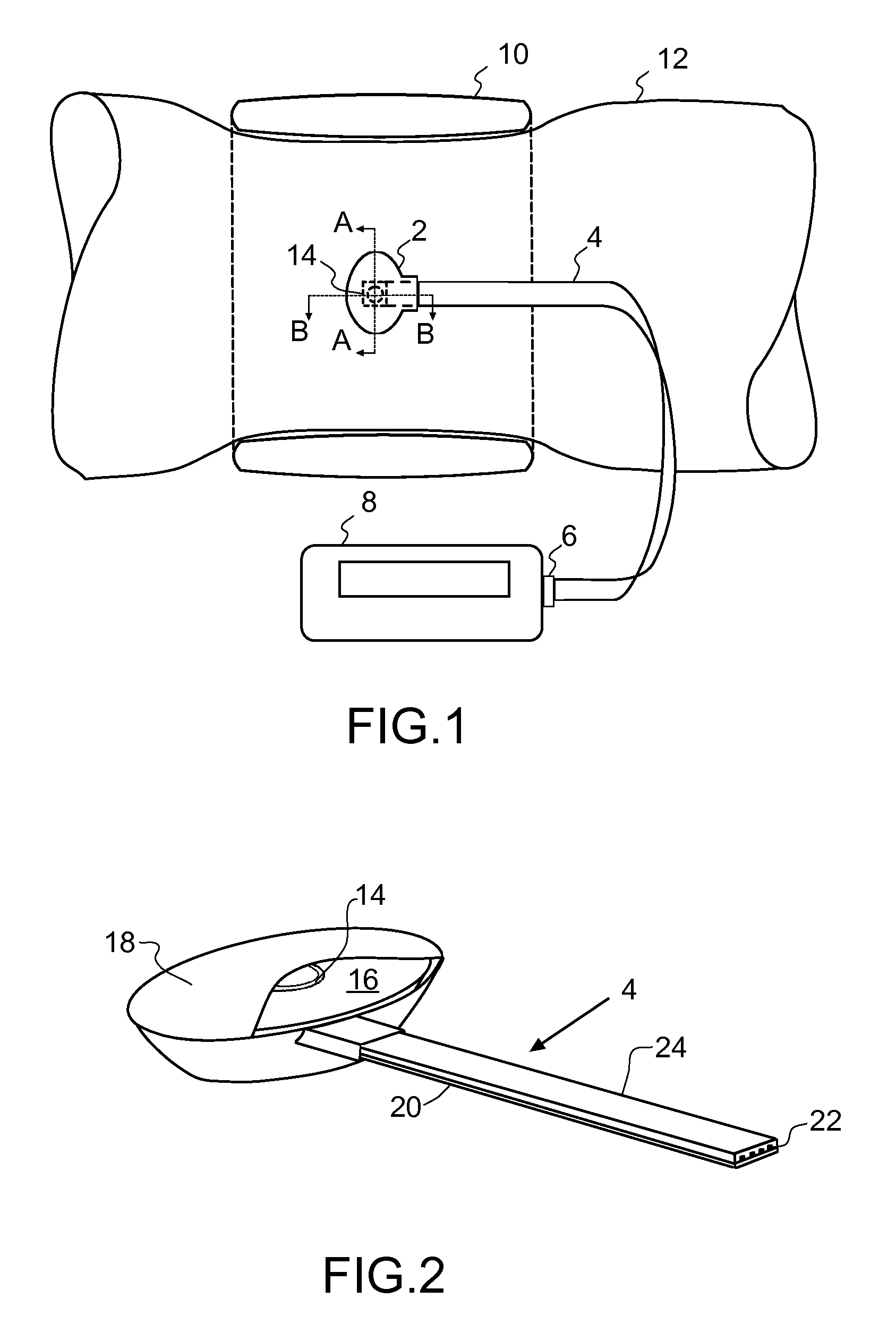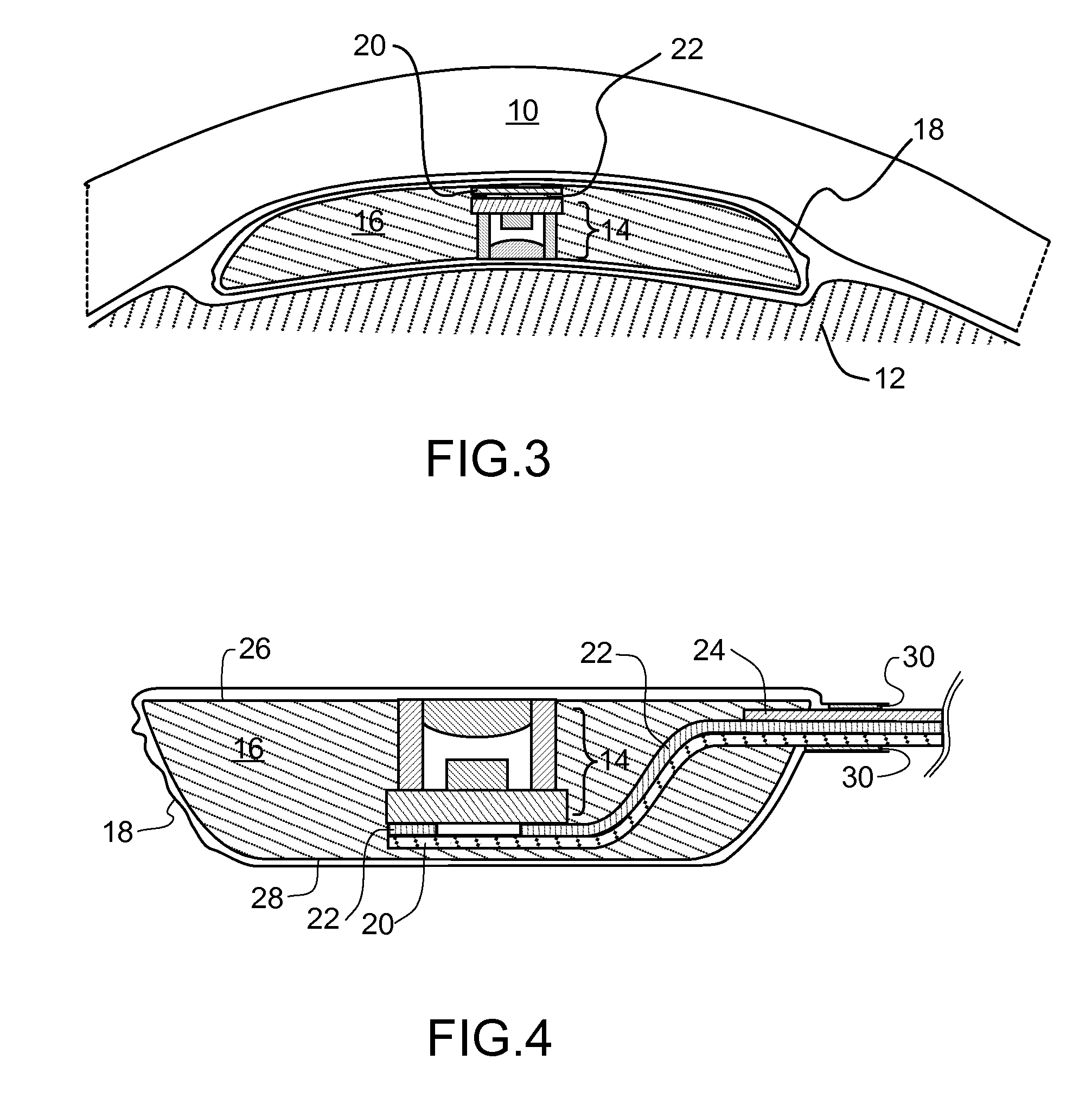Biomedical interface pressure transducer for medical tourniquets
a biomedical interface and pressure transducer technology, applied in the field of transducers, can solve the problems of affecting the local stress field, affecting the safety of patients, and affecting the safety of patients, and achieve the effect of low cos
- Summary
- Abstract
- Description
- Claims
- Application Information
AI Technical Summary
Benefits of technology
Problems solved by technology
Method used
Image
Examples
Embodiment Construction
[0028]A biomedical interface pressure transducer apparatus is shown in FIG. 1 and consists of: biomedical interface pressure transducer 2, flexible interconnector assembly 4, connector 6 and control means 8. The biomedical interface pressure transducer 2 is disposed between a pneumatic tourniquet 10 and a limb 12 and incorporates a modified MEMS pressure sensor 14. The transducer may be positioned at a desired location under the tourniquet using medical adhesive tape or adhesive pads.
[0029]In overview, the pneumatic tourniquet 10 applies pressure to the enclosed limb 12. The biomedical interface pressure transducer 2 is located at the interface between the pneumatic tourniquet 10 and the limb surface. Control means 8 includes a user interface that permits a user to control the operation of the biomedical interface pressure transducer 2. The control means 8 displays relevant information regarding the operation of the biomedical interface pressure transducer 2 to the user. The user in...
PUM
 Login to View More
Login to View More Abstract
Description
Claims
Application Information
 Login to View More
Login to View More - R&D
- Intellectual Property
- Life Sciences
- Materials
- Tech Scout
- Unparalleled Data Quality
- Higher Quality Content
- 60% Fewer Hallucinations
Browse by: Latest US Patents, China's latest patents, Technical Efficacy Thesaurus, Application Domain, Technology Topic, Popular Technical Reports.
© 2025 PatSnap. All rights reserved.Legal|Privacy policy|Modern Slavery Act Transparency Statement|Sitemap|About US| Contact US: help@patsnap.com



